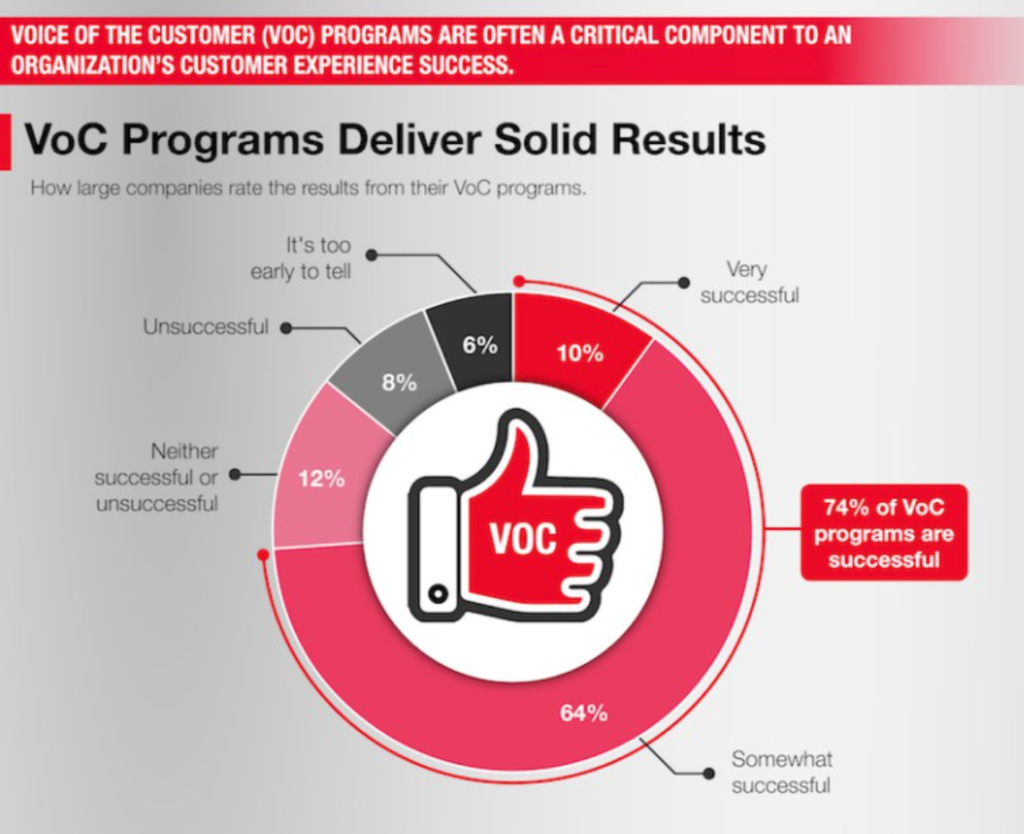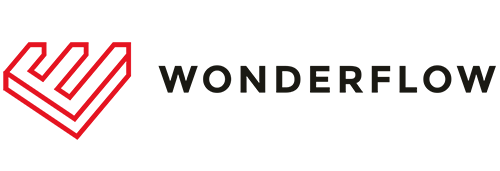Deeply understanding your customers and their overall customer journey is imperative to improving the customer experience. And no one knows it better than Riccardo Osti, Wonderflow’s very own founder and a past executive coach guiding leaders on CX success. So, in this blog post, he shares his insights regarding four key stages for building an effective strategy based on the voice of the customer.
“Customer-centric companies are 60% more profitable than companies that don’t focus on customers,” Forbes states when comparing customer and product-centric organizations.
But what does it mean to be product-centric or customer-centric? Before we delve into the four stages of the voice of the customer program, let’s explore what these two terms mean.
Product-Centric vs. Customer-Centric
A product-centric company believes its products are the most relevant driver of revenue. Such a company is in love with the qualities, the tech, and the performance of its products. Revenue growth usually comes from product line extensions, geographical expansion, or aggressive discount strategies. Therefore, the best product-centric companies have tremendous product expertise.
In contrast, a customer-centric company believes its customers are the most relevant driver of revenue. This company is in love with its customer base’s diversity, behavior, and relationship with the brand. Revenue growth usually comes from upselling and cross-selling, and the focus isn’t often on this year’s revenue but more on the mid-term (customer lifetime value). Therefore, the best customer-centric companies have tremendous relationship expertise.
A Successful VoC Program is Customer-Centric
What does it mean to be customer-centric? It means that your organization does engage with customers, learns from them, has processes to transform these learnings into decisions and customer service improvements, and ultimately tracks the output, generating a virtuous loop, where insights from customers fuel innovation and growth.
The starting point of a customer-centric journey is the growing attention to the Voice of the Customer (VoC). In other words, the feedback of customers, expressing their opinion about their brand experience and with its product and service. Consequently, organizations need to buy and adopt solutions to generate, find, collect and analyze VoC data.

Source: Hubspot
Understanding where your company stands in the transition from product to customer-centric is key to finding the right tools to deliver results. How to know where your company stands in the process?
Read what follows and place your company in the stage where you believe it fits best.
The Four Stages of the Voice of the Customer Program
We now look into the required four stages of the VoC program. If you are in the first two, you should be worried about falling behind innovative competitors.
In the third, you are in the exciting stage where you can finally benefit from VoC using the correct technical solutions.
However, stage 4 is where you want to be.
01. Engagement
Stage 1 — Past
Companies feel they have to interact with customers because they see commercial (tactical) opportunities when they do so. That’s when a brand buys a social engagement tool, installs a chat on its website, or uses its official social channels to handle direct messages from the users.
To move to the next stage, you need to create a listening practice
02. We want data
Stage 2 — Past
Companies believe it is essential to collect all customers’ conversations from stage 1 and add new ones. At this stage, you start sending out surveys, questionnaires, the old-fashioned NPS with many unnecessary questions, or when you want to scrape the whole Twitter searching for keywords you believe are relevant for you. To do this, you need social listening tools.
To move to the next stage, you need to create a process to include VoC into your day-to-day and an NLP technology to learn from texts.
03. Awareness
Stage 3 — Present
Companies realize they have collected a lot of customer data but have no idea what to do. VoC analysis (NLP) solutions come into play to interpret customer feedback and extract insights relevant to the business.
To move to the next stage, you need to leverage NLP descriptive, predictive solutions and create processes for which VoC is integral to your strategic planning.
04. VoC drives the business
Stage 4 — Future
Companies use predictive and prescriptive technologies to make decisions that have a massive impact on the industry. The organization captures and leverages the VoC to maximize customer lifetime value. Customer KPIs are at the Board Meeting and included in the bonus components of the workforce.




